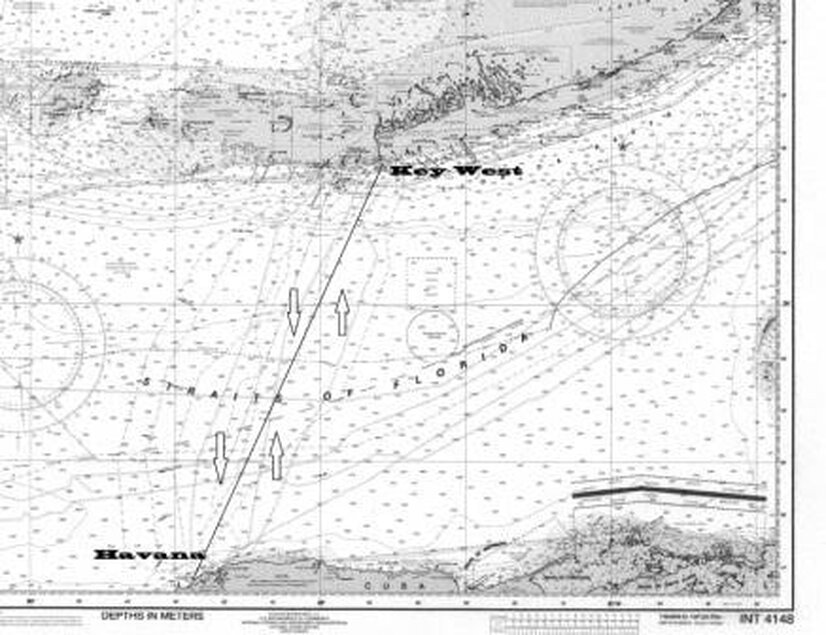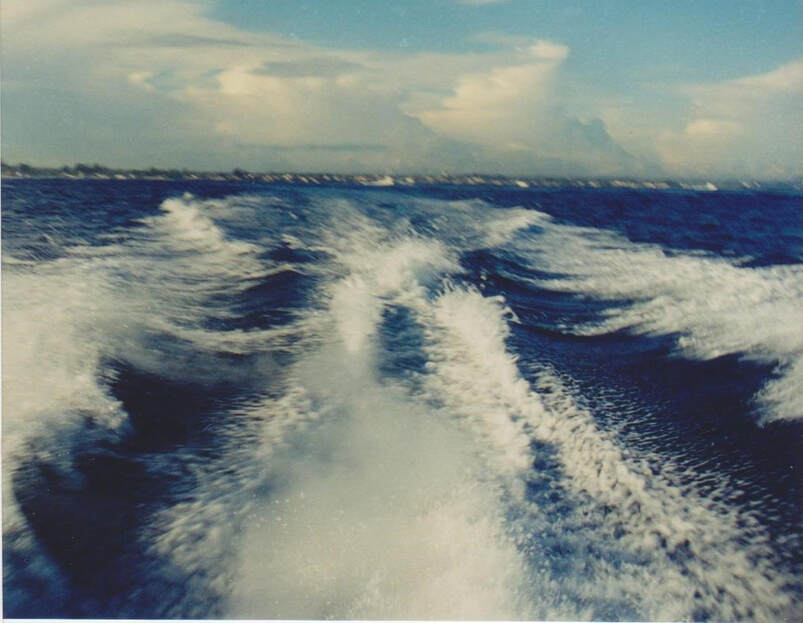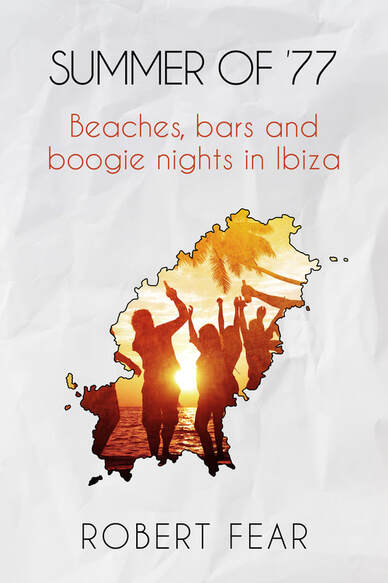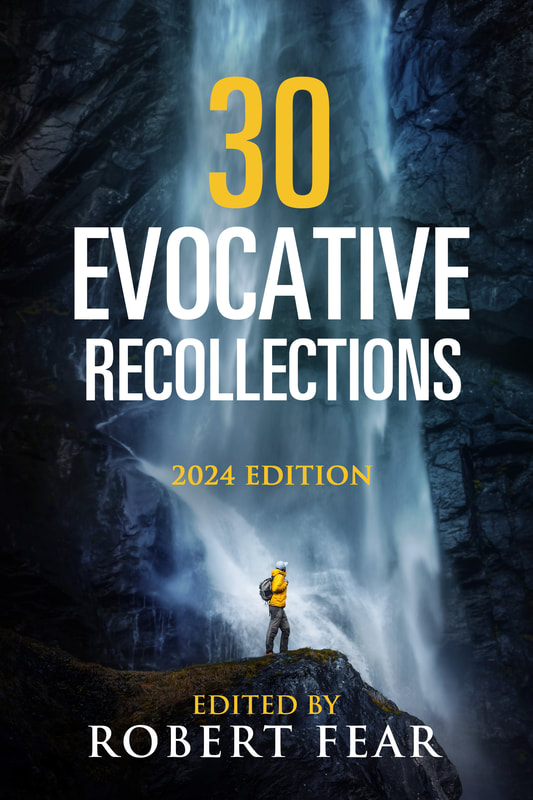The American smugglers in Cuba by Denis Dextraze
After my arrival in May 1998, I spent the first few days in Marina Hemingway meeting the dock`s neighbors who to my great surprise were mostly Americans. Where was the embargo? During the second term of the Bill Clinton`s administration, the rules about visiting Cuba had not changed but were seemingly more relaxed. Actually, many American boaters coming to Cuba never reported their visit when they came back home. Some had a very good reason. They were smugglers.
The outgoing trade was mainly limited to Cuban cigars, illegal in the U.S., and escaping people. However, just like the Spaniards using Carrara marble as ballast for their Caravelles on their way down to the Americas and gold and precious wood as ballast on their way home, the real professional smugglers traded both ways. The most popular goods to smuggle into Cuba in those days were items which were illegal for Cubans to own like notebook computers and VHS VCRs for the general population and very useful instruments like walkie-talkies, portable VHFs telephones and GPS for balceros, people planning to escape Cuba on makeshift crafts, floating trucks and cars. Yes, I said floating trucks and cars!
Once, a floating 1949 Chevy pick-up truck loaded with Cubans was stopped by the U.S. Coast Guard off the coast of Florida. This unlucky and resourceful group were not to set foot on American soil and claim refugee status by invoking the “Wet foot, Dry foot” law in effect since 1966. As per an arrangement previously made with Cuba, the U.S. Coast Guard brought the sad escapees back to Mariel, a large bay thirty miles east of Havana and sank the floating invention because it was a hazard to navigation. The next day, this event made the news in Key West and there was an uproar of protests against the Coast Guard not so much for bringing the balceros back but mainly for sinking the running vintage truck, a collector`s item.
Back in those days, to renew their tourist visas, Canadians had to go out every two months just like other foreigners. I could take short flights to Nassau or Cancun but the least expensive and more adventurous way was to sail across the straight to Key West, only ninety nautical miles away. Therefore, two or three boat owners with the same need to renew their visas would get together and share the cost of the fuel for the round trip. I did that with different boats but Jerry’s Hot Potato was my favorite ride. Jerry was not in the smuggling business. He did not need the money. However, he routinely brought a few boxes of cigars to impress his American political friends like Bill Clinton with a very exclusive, rare and illegal gift.
Jerry always entered the Key West Channel at night. He then would call the U.S. Coast Guard on the VHF and inform them that he was coming in from Cuba and was going to a specific marina. He would be instructed to call again when he was at the pier and stay on the boat until an official representative would come. As soon as the boat was tied down, he would dump the bag containing his precious illegal cigars in the closest trash can. I did this trip with him maybe five or six times and it was always the same routine. The same elderly gentleman from the Department of Agriculture would show-up, review your papers, check the refrigerator and ask you if you had any fruits or fresh meat. He would call the Coast Guard on his portable VHF, transmit the ID information and get a clearing number. He then would tell us that if nobody from Customs showed up within the next three hours, we should go downtown the next day to the Immigration office to have our passports stamped. Nobody ever showed up to check on us probably because they had a limited amount of custom officers working at night. This is what smart Jerry always counted on. He never lost a box of precious cigars!
The next day, we would show up downtown at the Federal building and report to the Immigration office. We then would be confronted by “the bitch”, the nick name given to the head of Immigration in Key West by all the American boaters checking in after an illegal visit to Cuba. The story is that she was married to a Cuban American whose family had lost everything when they left Cuba after the revolution. The first time we met “the bitch”, she asked Jerry, the U.S registered boat owner, if he had spent any money in Cuba. The reason for this crucial question came from the wording of the American embargo with Cuba which did not prevent American citizens from visiting Cuba but forbade them from spending any money on the island. When cool Jerry said no, she inquired how he had paid for his docking fees. He said that a Canadian friend of his who loved sport fishing had paid for all his personal and boat’s expenses in exchange for using the boat for fishing outings. When she asked who and where this generous soul was, he turned around and pointed at me. From there on, probably because we both were in the Immigration computer’s central data bank, Jerry had no problem checking back in the U.S. when returning from Cuba. I was his official Canadian legal benefactor.
Bob, a greyish long haired Marine veteran, still kept the shape for his age regardless of his excess smoking and drinking. As a good story teller, he had a knack for making you believe that all his exaggerated tails of smuggling were true. That was particularly effective with Cuban women who were hypnotized by his blue eyes. He used to joke about the fact that his old forty foot power boat might not make it to harbor on his next cigar run. The reason he evoked for this planned lack of maintenance was that the money he would spend fixing her would not be recuperated in the sale. Indeed, he planned to sell the boat and move to Cambodia where he would invest the money on a “friendly house & bar”. Like half of his stories, we did not believe that he was serious about this dangerous venture. One day, someone coming back from Key West, where he had run across Bob, informed us that he had indeed sold his old junk and was making plans to leave for Cambodia. Nobody ever heard from him again.
Some of the “professional smugglers” made a good living from this two way trade and did the US/Cuba round trips regularly. They had constructed inventive caches inside their boat to hide away their illegal goods from the Cuban Coast Guard and Customs inspectors. I know of a smuggler who had built a double ceiling through the length of his boat. The cache was about four inches high, high enough to hide a full size VHS VCR or two stacked boxes of large cigars like Robustos or Esplendidos. Some smugglers were openly bragging about their illegal trade but I am sure that there were many others who were very secretive and smartly kept their business to themselves. The best example of that discretion was the case of Swamp Charlie.
Swamp Charlie was a small, unpretentious, mustachioed man in his fifties. He came from the low lands of Louisiana near New Orleans where he got his nick name. He lived with his minuscule dog in a small and old twenty eight foot wooden power boat. He was a chain smoker and a good drinker judging from the number of dead bottles and full ashtrays lying around his totally disarrayed single cabin. He had a younger Cuban girlfriend with two kids living in the next town Yamanitas. She was taller and bigger than he. Rumors had it that she was beating him occasionally, probably when he was too drunk to put up a fight.
Swamp Charlie kept to himself. I did not particularly befriend him but I was there to give a hand when help was needed. Since I had a car, a gold Mercedes 300SD equal to one of Fidel’s car, which I had temporarily imported from Canada, I drove him a few times to downtown Havana to find parts. By way of thanking me, he would buy me a few Buccanero beers in one of the sleazy downtown bars. He did not really socialize with his neighbours with the exception of when someone threw a party for a special occasion and invited everybody to bring a chair and join the group sprawled on the grass next to the channel. He went back and forth to the U.S. for a period of fifteen to eighteen months and then stopped coming. What had happened to Swamp Charlie?
I was to find out two years later after I had sailed Aventura to Key West. I met Swamp Charlie by coincidence at my favorite watering hole, the Hogfish Bar and Grill in Safe Harbour. He immediately offered me a Cuban cigar. Because he was not going back to Cuba anymore, he confided in me an incredible story, the kind that you can see only in movies. He said that during his stay on the island, he had made many round trips trading both ways i.e. cigars for the U.S. and VCRs for the Cubans. He had found an American that went after the illegal Cuban cigar trade in a big way. He had bought so many boxes of various size cigars that it took him four trips to deliver the total order.
His boat was now in dry dock in a neighboring Marina. So, he invited me for a visit the next day to see his caches which the authorities both American and Cuban had never found. It was ingenious. The small boat had two very large fuel tanks. Both had a see-through section on the side where you could visually inspect the level of the fuel. Swamp Charlie had baffled both tanks so that the fuel only occupied a small portion of the space. One of the spaces was so big that he smuggled the teenager son of his Cuban girlfriend past the Cuban Coast Guard and let him loose once on U.S. soil to claim refugee status using the “Wet foot, Dry foot” law. He was in the process of taking the baffles out. Now that he did not need them, he did not want the suspicious caches to be discovered.
His smuggling days were over. He was bringing his old boat back to the swamps of Louisiana to sell her. He felt that he had made enough money to last for a long while. This uneducated, discrete and unpretentious redneck was the smartest of all smugglers for not being too ambitious and quitting while he was ahead. His judgement was right on. I could imagine Swamp Charlie drinking rum, chain smoking cigarettes and occasionally leftover smuggled Cuban cigars in the shack that he had swapped for his old boat. He was enjoying his retirement from smuggling.
Although smuggling cigars was the predominant trade, smuggling people was much more lucrative. There were many ways that Cubans could be taken off the island by outsiders but for boaters living in Marina Hemingway there were only a few options. If you owned a large boat, you could build a hiding place that hopefully the Cuban Coast Guard would not find; you could plan your exit for a time where a “friendly” inspector would turn his head for a good tip which did not represent much since a one hundred dollar bill represented five months salary. Another option was to pick up the escapees at sea.
That ultimate option was much more complicated but much more lucrative since you could transport many people at the same time. The whole process depended on timing and organization. First, you would provide the “aspiring escapees” with a portable VHF phone, a portable GPS, and with only one walkie-talky and keep one of the pair for yourself. Then, you had to give them precise GPS coordinates of latitude and longitude and a precise time for meeting them at sea. Then, the Cubans had to find a fisherman with a boat that would take the risk of taking them illegally to open sea at night by either sneaking past the Cuban Coast Guard check point or simply bribing them. The smuggling foreign boat would try to time the complicated and lengthy exit procedure from the Marina so that he would be on time for his rendez-vous at sea He would sail out of the Marina on a straight course until his running lights were out of the line of sight. He would then turn off all his lights, and locate the fishing boat preferably using the walkie-talkies which had a shorter range and were not listened to by the port authorities. Once the small fishing boat was spotted, he would quickly take the precious human cargo on board and get out of the twelve mile coastal zone at full throttle.
If he was a smart and cool captain, he would not take a direct course for the U.S. Rather, he might take a course as if he was going south west. Then, when he was in the middle of the Gulf Stream, he would turn to starboard and let the Stream increase his speed by an additional five knots as if he was part of the heavy maritime traffic going north from South America. By doing it that way, his odds of being picked by the American Coast Guard patrolling the area were greatly reduced because they could not stop every boat. There was simply too much traffic.
I personally know of only a few cases where smugglers staying in Marina Hemingway got into the human cargo business. It was probably too complicated and too risky. However, while I was in Cuba, I personally witnessed two famous cases of escapes from Cuba that made the headlines on American news. Of course, these exploits were never reported on Cuban media. It could have given new ideas to the herd of eleven million poor souls left behind…
Not every Cuban wanting to escape had to hide in foreign boats or as bolseros taking life threatening risks at sea on flimsy crafts. Some did it in plain sight of the Cuban Coast Guards. While in Key West, I read one morning in the Key West Citizen, the local newspaper, an interesting story about two junior Cuban coast guards having escaped Cuba in their small Cuban Coast Guard craft. To prevent this type of escape from Cuba, the two operators of these small boats were never allocated fuel for more than a two or three hour run at low speed. These kids had planned their escape by hiding fuel in small containers. When they got to a public pier in Key West, they tied their craft, abandoned their AK47 at the bottom of the boat and started walking downtown in their olive green fatigues. They were hoping that, just like in Cuba where citizens have to take turns at night watching each street for unusual activities, they would be spotted and reported or they would run into local police officers. At four o’clock in the morning, there wasn’t a soul in town. They wandered around this strange dead town until they finally found a police station and turned themselves in evoking the “Wet foot, Dry foot” law. When interviewed by law enforcement officers and the press, one of the defectors summarized in just one sentence the reason for his escape from Communist Cuba. He said this: “I have been a coast guard for almost ten years and I never had enough money to buy myself just a radio”. This incident became the talk of the town. Local citizens complained about harbor safety. Where were the Homeland Security people?
I was in my “Office”, the beach bar across the street from my house, on a nice Sunday afternoon when the beach in front is always swamped with people. All of a sudden, we heard a commotion outside with people all running in the same direction. We rushed outside to witness a cigarette power boat heading at full speed towards the damaged and abandoned concrete pier about half a mile away. Five or six Cubans with backpacks got out from under the shrubs where they had been hiding and rushed to the pier. They all jumped on the boat which never really stopped completely. Before you knew, the cigarette boat had turned around and was heading out at full speed while the beach runners were shouting “Yo tambien, Yo tambien, Yo tambien” Spanish for “Me too, Me Too, Me too”.
I am sure that there were many of those quick pickup and delivery runs dearly paid for in Miami which I never heard about but this one was special to me because it happened in front of my eyes and the event also made the U.S. news. I guess that the captain of this boat did not have a Coast Guard Captain’s license. Indeed, he had miscalculated the distance and strong currents and had not figured out the consumption of the two huge gas-guzzling engines. He ran out of gas on his way back. The expensive cigarette boat was found drifting in the Gulf Stream and seized by the U.S. Coast Guard. The illegal passengers were sadly returned to Cuba.
After I was gone from Marina Hemingway and during the two years of my absence, the new George Bush administration put a clamp on American boaters visiting Cuba and the Cuban authorities cleaned up the smuggling. Fines were given, boats were seized and owners were jailed, It was the end of the golden years for American smugglers.
Crossing route from Havana to Key West
Running wake













